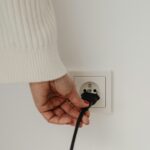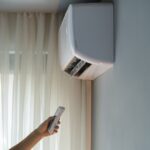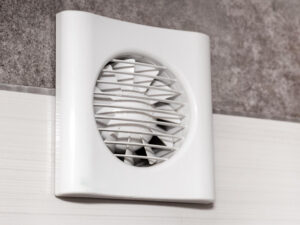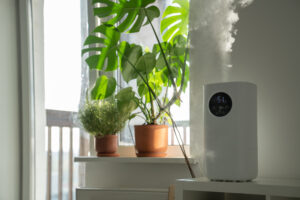
Breathing clean air in your home is essential for good health. However, poor indoor air quality can often go unnoticed until it starts causing problems. Identifying signs of poor air quality early on can help you take action to improve the air you breathe and protect your family’s health.
Common signs include symptoms like headaches, dizziness, and allergies. You might also notice unpleasant odors or excessive dust. These indicators can hint at underlying problems contributing to the air quality in your home.
Understanding where indoor air pollutants come from is key to addressing the issue. Everyday items like cleaning products, paints, and even furniture can release harmful chemicals. Poor ventilation can trap these pollutants inside, making the air in your home less healthy. Being aware of these sources helps you find ways to minimize exposure and keep your indoor air clean. Taking simple steps can make a big difference in maintaining a healthy living environment.
Common Signs of Poor Indoor Air Quality
Identifying poor indoor air quality can start with noticing common signs. Pay attention to your health and environment. Here are some signs to look out for:
1. Health Symptoms: Frequent headaches, dizziness, and tiredness can be due to poor air quality. If you or your family members experience these symptoms mostly at home, the air might be the problem.
2. Allergy Flare-Ups: Increased allergy symptoms like sneezing, coughing, and itchy eyes when indoors can signal problems. If symptoms improve when you leave home, check your air quality.
3. Odors and Stale Air: Persistent unpleasant smells or air that feels stuffy can be signs of poor ventilation. Proper ventilation is essential for good air quality.
4. Excessive Dust: Finding more dust than usual on surfaces can mean your air is carrying too many particles. This can be harmful, especially for people with respiratory issues.
5. Mold Growth: Mold spots on walls, ceilings, or around windows are indicators of moisture problems. Mold spores in the air can lead to health issues and worsen air quality.
Recognizing these signs can help you take action to improve your indoor air, making your home a healthier place to live.
Understanding the Sources of Indoor Air Pollutants
Knowing where indoor air pollutants come from is vital in tackling air quality problems. Many everyday items and activities can introduce pollutants into your home.
1. Household Cleaners: Many cleaning products contain chemicals that can evaporate into the air. Using these products in unventilated areas can increase indoor pollutants.
2. Paints and Varnishes: Fresh paint and varnishes release volatile organic compounds (VOCs) into the air. Even after they seem to be dry, these materials can continue to emit harmful chemicals.
3. Furniture and Carpets: New furniture and carpets can release formaldehyde and other chemicals. This off-gassing can affect air quality, especially in the first few months after installation.
4. Cooking: Cooking releases particles and fumes into the air, especially when using gas stoves. Proper ventilation during cooking helps reduce these pollutants.
5. Hobbies and Crafts: Activities like painting, gluing, or using solvents can introduce harmful chemicals into the air. Conduct these activities in well-ventilated areas.
Understanding these sources can help you reduce exposure by choosing less harmful products and improving ventilation. Small changes in your daily routine can make a significant difference in the air quality of your home.
The Impact of Poor Air Quality on Health
Poor indoor air quality can have a significant impact on your health. Understanding the potential risks can help you take steps to improve your home’s air. Breathing in polluted air can lead to various short-term and long-term health issues.
- Short-Term Effects: You might experience headaches, dizziness, and fatigue quickly. Other symptoms include eye, nose, and throat irritation. These issues can make daily activities difficult and reduce your overall quality of life.
- Long-Term Effects: Prolonged exposure to poor air quality can lead to more severe problems. Respiratory diseases such as asthma and bronchitis can develop or worsen. Some pollutants may even increase the risk of heart disease and cancer.
- Vulnerable Groups: Children, the elderly, and people with pre-existing health conditions are more susceptible to the effects of poor air quality. Ensuring your home has clean air is essential for protecting the health of these vulnerable groups.
By recognizing these health impacts, you can prioritize improving your indoor air quality. This helps create a safer and more comfortable living environment for everyone in your home.
Tools and Methods to Measure Air Quality
Measuring indoor air quality is crucial for identifying problems and taking corrective actions. There are various tools and methods available to assess the air in your home.
- Air Quality Monitors: These devices can measure levels of pollutants like VOCs, carbon dioxide, and particulate matter. They provide real-time data and alerts if levels exceed safe limits. Using an air quality monitor can give you a clear picture of your indoor environment.
- Professional Testing: Hiring professionals to conduct air quality tests can be very effective. They use advanced equipment to measure various pollutants accurately. Professional assessments provide detailed reports and recommendations for improving air.
- DIY Kits: Home test kits are available for detecting specific pollutants like radon and mold. These kits are easy to use and can help you identify specific issues quickly. Follow the instructions carefully for reliable results.
- Regular Maintenance: Ensuring your HVAC system is well-maintained also helps. Regular filter changes and duct cleaning contribute to better air quality. An efficient HVAC system keeps the air fresh and reduces the presence of pollutants.
Using these tools and methods, you can keep track of your indoor air quality and take steps to improve it. This ensures a healthier home for you and your family.
Conclusion
Maintaining good indoor air quality is essential for your health and well-being. Recognizing the common signs of poor air quality, understanding the sources of pollutants, and knowing the health impacts are vital steps toward creating a healthier home. Utilizing tools and methods to measure and improve air quality can make a significant difference.
By taking proactive steps, you can ensure that the air you and your family breathe is clean and safe. Regular monitoring, using air quality devices, and maintaining your HVAC system are practical ways to achieve this. Investing time and effort into improving indoor air quality not only enhances comfort but also protects your health.
For expert assistance in improving your indoor air quality, contact Turner On Services. We provide top-notch services and indoor air quality solutions. Call our Milford electricians and HVAC specialists today to breathe easier and live healthier!







No comment yet, add your voice below!